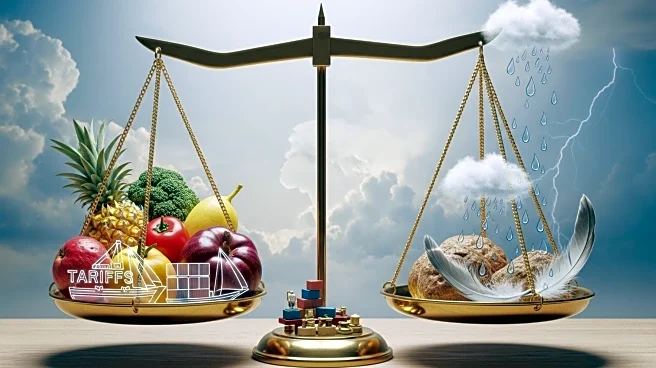What is the story about?
What's Happening?
Factory output in July experienced a decline, breaking a three-month streak of gains. The volume of production index (VoPI) contracted by 1.1% year-on-year, marking the first decline since March. This downturn was attributed to front-loaded orders aimed at avoiding U.S. tariffs and severe monsoon rains disrupting production activities. The Philippine Statistics Authority reported a seven-month output growth of only 0.4%. Key sectors such as food production and electronics manufacturing saw reduced growth rates, highlighting the fragility of the manufacturing rebound and vulnerability to external factors.
Why It's Important?
The decline in factory output underscores the challenges faced by the manufacturing sector, particularly in adapting to tariff changes and weather-related disruptions. This situation may affect export competitiveness and economic stability, as manufacturing is a significant contributor to economic growth. The reduced growth in key sectors could lead to adjustments in production strategies and supply chain management. Understanding these dynamics is crucial for policymakers and industry leaders to mitigate risks and support recovery efforts.
What's Next?
Manufacturers may need to adapt to the new tariff regime and stabilize supply chains to recover output levels. Monitoring weather patterns and their impact on production will be essential for future planning. Stakeholders may explore strategies to enhance resilience against external disruptions, such as diversifying supply sources or investing in infrastructure improvements. The potential for gradual recovery will depend on effective adaptation to these challenges.
AI Generated Content
Do you find this article useful?














